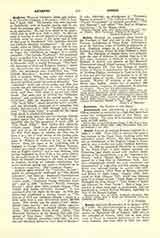

Anerio, GIOVANNI FRANCESCO, b. in Rome c. 1567; d. c. 1620. He spent four years as a chorister at St. Peter’s, under Palestrina. He was in turn choirmaster to Sigismund III of Poland, 1609, and at the cathedral of Verona, 1610; but he soon after went to Rome as musical instructor at the Seminario Romano, and from 1613 to 1620 was choirmaster at the church of Santa Maria de’ Monti. In 1616 he took holy orders. Anerio was among the first Italian composers to use the eighth note, or quaver, and its subdivisions. He left a large number of works, embracing all the usual forms of sacred music, the list of which may be found in Vogel’s “Weltliche Vokalmusik Italiens” and Eitner’s “Quellen-Lexikon.” A peculiarity of his was the use of fantastic titles for his collections such as “Ghirlanda di Sacre Rose” (Rome, 1619); “Selva armonica” (Rome, 1617); “Diporte musicali” (Rome, 1617). He also arranged Palestrina’s celebrated “Missa Papae Marcelli” for four voices, making it more practicable than in its original form of a six-voice mass. His style is partly based on the traditions of the sixteenth century, partly on the innovations of the seventeenth which introduced solos with a figured bass.
J. A. VOLKER

